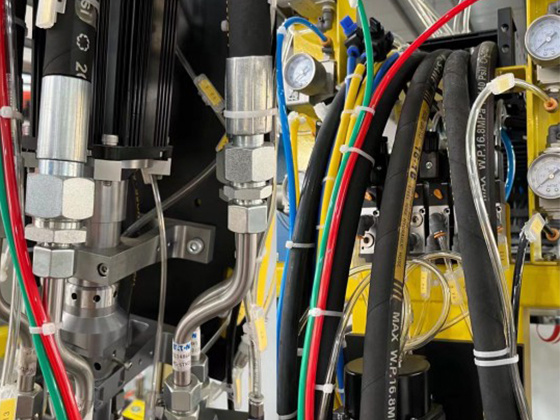Semi-annual report of local economy: GDP of Guangdong, Sulu and Lu both exceed 3 trillion yuan, growth slows down in the east
Dec 28,2021
Local economic transcripts in the first half of the year have been made public one after another. Up to now, 27 provinces, autonomous regions, and municipalities across the country have announced their economic performance in the first half of 2016. "Economic Information Daily" reporter combed and found that among the published data, the GDP growth rate of 21 regions in the first half of the year outpaced the national growth rate of 6.7%, and Chongqing, Tibet, and Guizhou led the country with a growth rate of more than 10%. The total GDP of the three provinces including Guangdong, Jiangsu, and Shandong exceeded RMB 3 trillion, and the total GDP of 10 regions including Zhejiang, Hubei, and Hebei exceeded RMB 1 trillion.
Although Chongqing’s GDP growth rate fell in the first half of this year compared with the first quarter and the same period last year, it still led the country with a 10.6% growth rate for the tenth consecutive quarter, and the driving effect of investment is more obvious. According to Zhang Fumin, deputy director of the Chongqing Municipal Statistics Bureau, in the first half of the year, the city completed a fixed asset investment of 708.934 billion yuan, a year-on-year increase of 12.5%. Among them, private investment was 361.974 billion yuan, an increase of 9.5%, accounting for 51.1% of the total investment. According to analysis, although the national private investment data has been declining this year, the data in Chongqing has risen instead of falling, and even hit the highest level since the city has become a municipality directly under the central government.
Some analysts claim that the “preference” of private capital for investment in Chongqing is due to the greater development potential brought about by its economic transformation compared to other regions. On July 26, the Chinese government website also announced the State Council’s "Approval on Approving the Chongqing High-tech Industrial Development Zone to Build a National Independent Innovation Demonstration Zone." Judging from the information released by the city’s Economic and Information Commission, Chongqing’s industrial structure continued to be optimized in the first half of the year, and the added value of high-tech industries increased by 25.1%, 14 percentage points higher than the national level. High-end sub-sectors supporting industrial transformation and upgrading, such as smart equipment, electronic components, medical instruments and equipment, have increased their output value by more than 40%.
It is not only Chongqing, but from the perspective of other parts of the country, investment is still a major driver of economic growth. Take Guizhou Province as an example. According to Ren Xiangsheng, Director of the Guizhou Provincial Statistics Bureau, the province’s GDP in the first half of the year increased by 10.5%, of which the province’s fixed asset investment increased by 21.5% over the same period last year. Among the three major investment areas, infrastructure investment increased by 21.1% over the same period of the previous year, and industrial investment increased by 16.7%. The investment structure continued to adjust, investment in people's livelihoods increased, and investment in emerging industries grew rapidly. Among them, the investment in education, health and social work closely related to people's livelihood increased by 55.3% and 69.3% respectively over the same period of the previous year.
Sichuan Province, whose economic aggregate is in the "trillion club", also because the overall investment situation is better than expected, the GDP growth rate in the first half of the year finally achieved a result of 7.5%. According to Xiong Jianzhong, chief economist of the Sichuan Provincial Statistics Bureau, the province’s fixed asset investment was 145.21 billion yuan, a year-on-year increase of 12.3%, and the growth rate was 1 percentage point higher than the same period last year. However, the lack of private investment that is evident in the national data is also reflected in the Sichuan data. In the first half of the year, private investment in Sichuan Province only increased by 5.4%, and the overall proportion dropped to 50.4%. Xiong Jianzhong said that this is because domestic private investment is mainly invested in real estate and manufacturing, and the profit level of real estate and manufacturing has narrowed in recent years. At present, the contrast between private investment and fixed-asset investment in the whole society is relatively large, which means that if the annual investment is to maintain a 10% growth, at the current private investment growth level of 5.4%, the investment growth rate of state-owned components must reach 15% or more .
It is worth mentioning that the economic report cards of various regions in the first half of the year show that the economic growth rate of the eastern region of my country has slowed down. Taking Beijing as an example, the economic growth rate in the first half of the year fell by 0.2% compared with the first quarter, while the GDP growth rate of Hainan Province in the first half of the year was even more pronounced, with a drop of 1.6%. Some experts said that the service industry in the eastern region currently accounts for a relatively high proportion. With the industrial transformation, the proportion of manufacturing has declined. Some traditional industries in the eastern region have been transferred to the western region. The rapid industrial growth brought about by the rapid industrial growth has often pushed up GDP growth. However, we cannot ignore the investment opportunities brought about by the economic transformation in the eastern region. In the first half of the year, the growth rate of private investment in the eastern region was significantly better than the national average, because private investment is profit-seeking, and this unevenness of cold and hot can just explain the problem.
Wu Qi, a senior researcher at the Chang'an Research Institute of Wanli, told the reporter of the Economic Information Daily that from the perspective of GDP growth, the economic trends of various regions are more distinct. The central and western provinces represented by Chongqing and Guizhou are significantly faster than the eastern coastal provinces. This is mainly related to two factors: First, due to the high economic base effect, it is difficult for the eastern region to maintain a relatively high growth rate, and the industrial economy in the eastern region has continued to be sluggish in recent years; the second is that the central and western regions have played a role under the support of the central government’s policies. The advantages of abundant resources and large market potential have accelerated the acceptance of domestic and foreign industrial transfers, and the development potential and space have been further released.
"However, at the same time, the pace of economic restructuring and industrial transformation and upgrading in the eastern region has further accelerated, and the proportion of high-tech industries and modern service industries and their contribution to economic growth have further increased. From the perspective of GDP growth, the recovery of import and export trade is weak Under the circumstances, investment, innovation, and consumption have become important driving forces for my country to promote GDP growth." Wu Qi said.
Recommended
JIU LONG Secures U.S. MSHA Certification, Advancing Global Strategy





